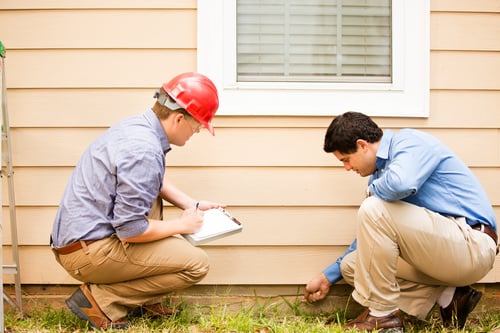Do you know if you need to install a radon mitigation system?
Not knowing if you need a radon mitigation system could be disastrous.
Many tests cause a bit of anxiety, making people procrastinate and put them off.
However, most people don't test for radon because they don't realize they have to.
Testing for radon is the only way to know for sure that mitigation is necessary.
If you test your home for radon gas levels and find all is well, you're good to go.
However, if your test results indicate high levels of this dangerous radioactive gas, it's not so great.
But, there are steps you can take to protect those who breathe the contaminated air.
One of the best things you can do to keep your radon levels low is proper maintenance of your system. Learn more from our blog post: "Maintaining Your Radon Mitigation System."
In the article below, we will discuss effective radon mitigation methods so you can keep your family safe.
Table of Contents
- Radon
- Test Your Home
- Foundation Types and Mitigation Choices
- Sealing
- Heat Recovery Ventilator
- Water Treatment
- Costs of Radon Mitigation
- Radon Eliminator
Radon
Radon is an odorless, colorless, tasteless gas and the leading cause of lung cancer in non-smokers.
Overall, radon poisoning is second to cigarette smoking in causing lung cancer.
You could temporarily reduce radon levels in your home by simply opening doors, windows, and vents on the lower floors of your home.
But that's kind of like throwing a glass of water on a massive fire and should not be used as a long-term mediation strategy.
There are much better ways to lower the radon levels in your home.

Test Your Home
Radon is measured in units expressed as picocuries of radon per liter of air or pCI/L.
In the U.S., it's standard practice to be certain indoor radon levels are kept at or below 0.4 pCi/L.
The U.S. Environmental Protection Agency recommends mitigation if your long-term test returns results measuring 4 pCI/L or more.
Short term tests are possible, but because radon levels can fluctuate daily, long-term tests are much more reliable.
Foundation Type and Mitigation Choices
Homes with basements or slab foundations can be mitigated with suction systems.
In a passive suction system, you insert pipes into the rock and soil below the home from the floor slab or outside the house.
The radon level that was found in your home will indicate how many pipes will be needed and where they should be located.
Many times just one pipe is required to achieve a "safe" level of radon.
The pipes installed under your home are then connected to a vent fan located outside the house or in an unconditioned area like a garage or attic space.
The fan will draw the gas from under your home and releases it into the outdoor environment, creating a vacuum under the slab.
Homes with basements can have block wall suction systems.
These systems make use of the hollow areas in the block foundation walls, effectively depressurizing them and directing the gas to the outside of the home.
If your home has a crawlspace, it can be fitted with a high-density plastic sheet covering the ground under your home.
A pipe is installed below the plastic sheet vents to the outdoors, directing the radon out of the home.
These radon mitigation systems can be fitted with a fan to create a stronger vacuum.
Sealing
Sealing shouldn't be used on its own but rather to reinforce the effectiveness of other mitigation systems by limiting radon's flow into the home.
As the foundation of your home settles, soil moves, cracks form, and new openings may occur in a previously sealed foundation.
This can allow dangerous levels of radon gas to accumulate inside your home.
Heat Recovery Ventilator
A heat recovery ventilator, sometimes called an air-to-air heat exchanger, relies on increased ventilation to reduce radon levels.
These systems are most effective when they're used in basements and require a proper balance to reduce the levels, but they can help mitigate other indoor air toxins as well.
But keep in mind that his system can often result in significant energy use for heating and cooling.
Water Treatment
Although it poses less risk than airborne radon gas, water could be responsible for some of the radon concentration in a home.
The radon can enter the home through water from showering, drinking, or running the tap.
Underground water sources like wells and springs are much more likely than surface water sources to carry radon into the home and should be tested.
Using a granular activated carbon filter or aeration system are the recommended mitigation methods for the water supply at the point-of-entry.
Costs of Radon Mitigation
The cost of radon mitigation systems can vary.
They can run anywhere from $500 to $2,000, with some more challenging fixes priced at between $3,000 to $5,000.
The typical radon reduction that can be expected with these systems ranges from 50 to 99 percent.
Passive sub-slab systems are sometimes a less effective choice that also results in increased energy costs.
But when you considering the alternatives, which could be lung cancer, these costs pale in comparison.
Also, the peace of mind that comes with knowing that you and your loved ones are safe from radon poisoning is priceless.

Radon Eliminator
The first step to getting your home tested and mitigated, if necessary, is talking to a professional mitigation company.
Radon Eliminator has an experienced team of professionally certified Radon Mitigation Specialists.
They also use state of the art radon testing and removal equipment to serve each one of their customer's unique challenges.
Radon Eliminator is rapidly becoming one of the largest and most respected Radon Mitigation Service Providers in the State of Ohio.
They would love to help you any way we can.
Click the button below to get started with Radon Eliminator and get your peace of mind.





